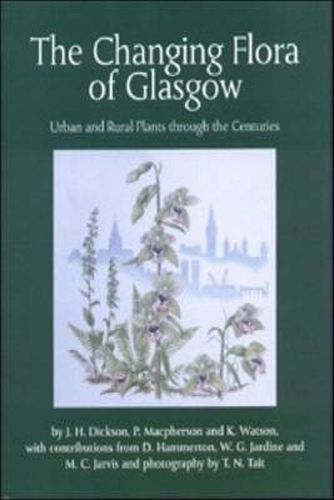Readings Newsletter
Become a Readings Member to make your shopping experience even easier.
Sign in or sign up for free!
You’re not far away from qualifying for FREE standard shipping within Australia
You’ve qualified for FREE standard shipping within Australia
The cart is loading…






This is the first ever flora of the Glasgow area that relates how plants have changed over time. Based on the results of 15 years’ intensive research by members of the Glasgow Natural History Society it reports discoveries of many special plants, including some thought to be extinct, and reveals sites of great scientific and conservation interest, as well as uncovering some little known aspects of the city’s natural, social and economic history. A general account of recording methods and of Glasgow’s geology, soils, climate, air and water and growth is followed by a catalogue of some 1500 species with habitat details and dot maps. The authors then consider how and why the flora has changed, especially since th first records were published in the 18th century. They describe and explain the past and present patterns of ferns, conifers and flowering plants, examine the effects of industrialisation, de-industrialisation and the spread of the city, and assess the impact of alien species, Special features of the flora are emphasised by comparisons with the plants of other European cities such as London and Berlin. The concluding section discusses current conservation issues (such as the control of giant hogweed and Japanese knotweed). The book is illustrated with photographs, maps and paintings, many in colour. These include several sequences to show places as they are now and how they once were. It combines scholarship with an accessible and entertaining style. It should be a reference work for botanists, and for general readers in many Glasgow homes.
$9.00 standard shipping within Australia
FREE standard shipping within Australia for orders over $100.00
Express & International shipping calculated at checkout
This is the first ever flora of the Glasgow area that relates how plants have changed over time. Based on the results of 15 years’ intensive research by members of the Glasgow Natural History Society it reports discoveries of many special plants, including some thought to be extinct, and reveals sites of great scientific and conservation interest, as well as uncovering some little known aspects of the city’s natural, social and economic history. A general account of recording methods and of Glasgow’s geology, soils, climate, air and water and growth is followed by a catalogue of some 1500 species with habitat details and dot maps. The authors then consider how and why the flora has changed, especially since th first records were published in the 18th century. They describe and explain the past and present patterns of ferns, conifers and flowering plants, examine the effects of industrialisation, de-industrialisation and the spread of the city, and assess the impact of alien species, Special features of the flora are emphasised by comparisons with the plants of other European cities such as London and Berlin. The concluding section discusses current conservation issues (such as the control of giant hogweed and Japanese knotweed). The book is illustrated with photographs, maps and paintings, many in colour. These include several sequences to show places as they are now and how they once were. It combines scholarship with an accessible and entertaining style. It should be a reference work for botanists, and for general readers in many Glasgow homes.